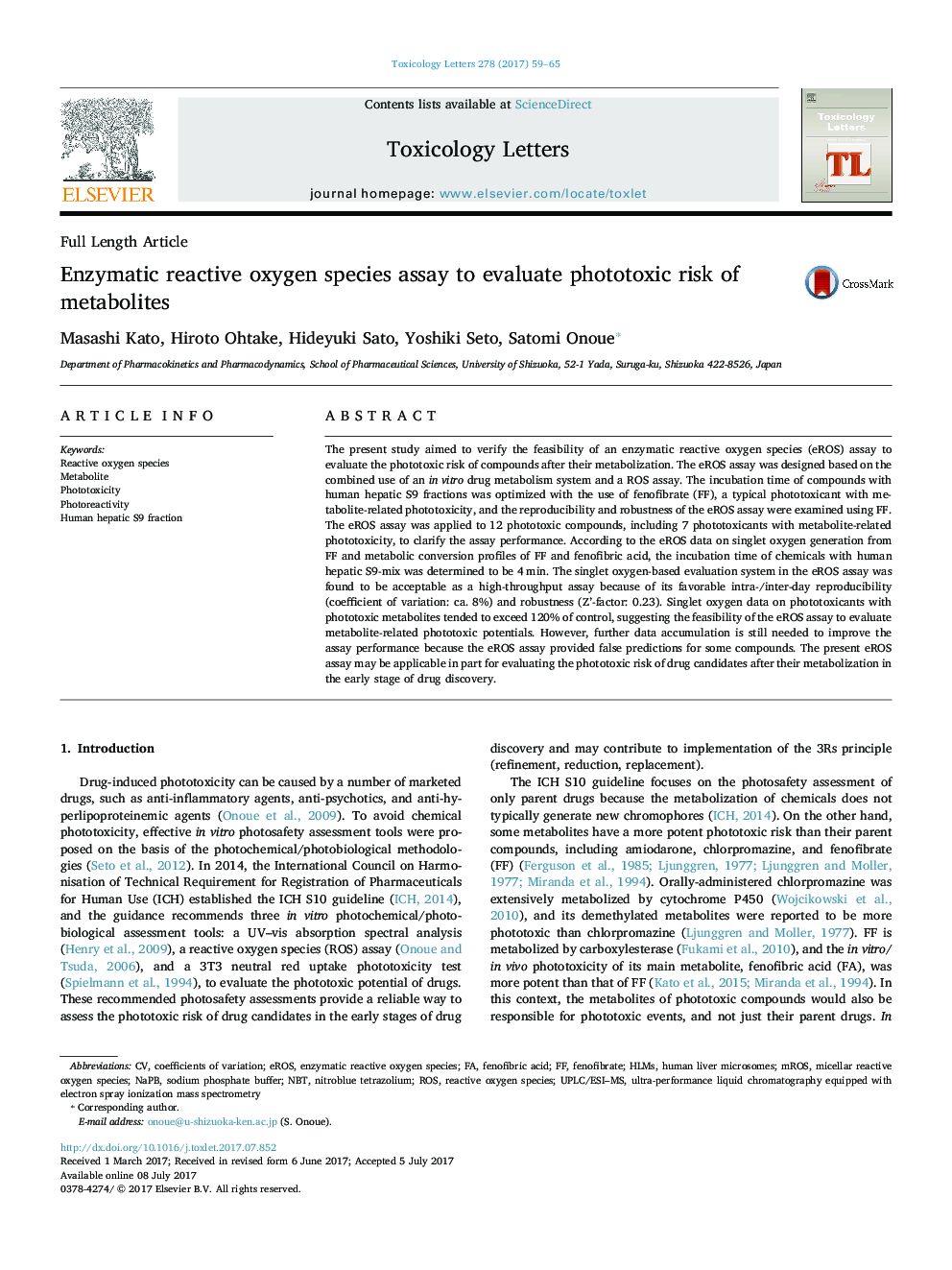| کد مقاله | کد نشریه | سال انتشار | مقاله انگلیسی | نسخه تمام متن |
|---|---|---|---|---|
| 5562054 | 1562595 | 2017 | 7 صفحه PDF | دانلود رایگان |
- Some metabolites of phototoxicants, as well as their parent drugs, would be responsible for phototoxic events.
- An enzymatic reactive oxygen species (eROS) assay was designed by combined use of an in vitro drug-metabolizing system and a ROS assay.
- The metabolite-related phototoxic potential of phototoxicants could be partly evaluated by eROS assay.
- Although further optimization and data accumulation is still needed, the eROS assay would be effective to assess the photosafety of drug candidate after metabolism.
The present study aimed to verify the feasibility of an enzymatic reactive oxygen species (eROS) assay to evaluate the phototoxic risk of compounds after their metabolization. The eROS assay was designed based on the combined use of an in vitro drug metabolism system and a ROS assay. The incubation time of compounds with human hepatic S9 fractions was optimized with the use of fenofibrate (FF), a typical phototoxicant with metabolite-related phototoxicity, and the reproducibility and robustness of the eROS assay were examined using FF. The eROS assay was applied to 12 phototoxic compounds, including 7 phototoxicants with metabolite-related phototoxicity, to clarify the assay performance. According to the eROS data on singlet oxygen generation from FF and metabolic conversion profiles of FF and fenofibric acid, the incubation time of chemicals with human hepatic S9-mix was determined to be 4Â min. The singlet oxygen-based evaluation system in the eROS assay was found to be acceptable as a high-throughput assay because of its favorable intra-/inter-day reproducibility (coefficient of variation: ca. 8%) and robustness (Z'-factor: 0.23). Singlet oxygen data on phototoxicants with phototoxic metabolites tended to exceed 120% of control, suggesting the feasibility of the eROS assay to evaluate metabolite-related phototoxic potentials. However, further data accumulation is still needed to improve the assay performance because the eROS assay provided false predictions for some compounds. The present eROS assay may be applicable in part for evaluating the phototoxic risk of drug candidates after their metabolization in the early stage of drug discovery.
Journal: Toxicology Letters - Volume 278, 15 August 2017, Pages 59-65
